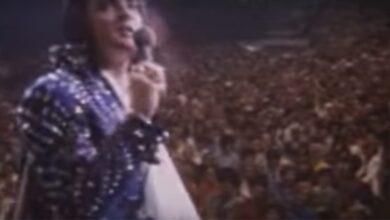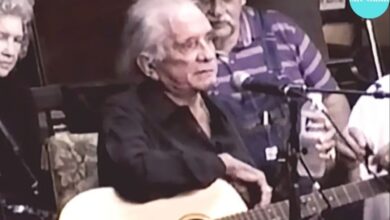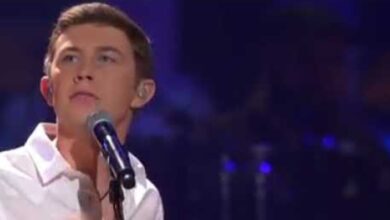Older Music Enthusiasts Revitalized by Procol Harum’s Classic Tunes
Procol Harum was not just a band; it was a phenomenon that emerged in the late 1960s, creating a unique intersection between rock, classical, and experimental music. Founded by Gary Brooker and lyricist Keith Reid, the band quickly distinguished itself from the rising tide of pop and rock acts of the time. Brooker’s compelling piano skills combined with his powerful and emotive vocal style formed a pivotal part of their identity. Reid’s enigmatic and often surreal lyrics added an additional layer of depth, appealing to listeners who craved something beyond standard pop fare. Their collaboration resulted in a musical output that was both intellectually stimulating and aurally captivating.
One of the most significant hallmarks of Procol Harum’s music is their ability to blend sounds that were traditionally seen in distinct genres. Baroque pop and progressive rock elements flourished in their compositions, leading to intricate arrangements filled with lush instrumentation. The band’s debut single “A Whiter Shade of Pale” epitomizes this approach, masterfully marrying Brooker’s soulful, poignant piano playing with Fisher’s ethereal organ riffs and Reid’s mystifying lyrics. This track, which became an instant classic upon its release, captured the spirit of an era characterized by a desire for both emotional and musical exploration.
Gary Brooker’s journey into music started at an early age. His roots in jazz and blues provided a strong foundation for the rock influences that emerged in the 1960s. Procol Harum’s sound reflects this diverse background, combining elements of rhythm and melody in such a way that appealed to both classical aficionados and rock fans alike. Their willingness to experiment with varied styles allowed them to grow artistically while maintaining a loyal fanbase throughout the years.
As the years went on, Procol Harum continued to release a string of successful albums that showcased their musical growth. Tracks such as “Conquistador” and “A Salty Dog” emphasized the band’s lyrical sophistication and musical craftsmanship. The themes explored in their songs often delved into introspective territory, reflecting existential questions and personal struggles through Reid’s lyrics, which resonated deeply with listeners. This ability to tackle complex subjects in a melodic format solidified their reputation as one of rock’s more intellectual propositions.
Procol Harum’s sonic experiments reached new heights with the aforementioned concert at Ledreborg Castle in 2006. This performance was not just a showcase of their greatest hits; it was a reimagining of their entire catalog through the lens of orchestral music. Brooker’s decision to collaborate with the Danish National Concert Orchestra and Choir breathed fresh life into their most cherished songs, enhancing their emotional resonance. The orchestral arrangements elevated the songs, creating a grand experience that added additional layers of dynamism and emotional complexity.
Live performances have traditionally represented a crucial aspect of Procol Harum’s artistry. Their ability to engage audiences and create a profound musical experience is evident throughout their discography, but it is during live renditions that their sound truly flourishes. The fusion of rock with orchestral elements in the Ledreborg concert served to not only revisit their classics but also to bring them into a modern context, allowing both old and new fans to appreciate the depth of their musical landscape.
The release of the 2009 live album capturing the Ledreborg Castle concert became a significant marker in their history. It showcased not just the band’s technical prowess but also their evolution over the decades. Critics and fans alike praised this album, noting how effectively it conveyed the emotional weight and the cinematic quality of the original tracks. Brooker’s powerful vocals and dynamic piano work served as the backbone, guiding listeners through a varied repertoire that defined Procol Harum’s storied career.
Throughout their journey, Procol Harum has welcomed several musicians into their fold. However, Brooker’s resilient presence has been the consistent thread, offering stability and guidance as the band navigated the shifting landscapes of the music industry. His vision in music extends beyond just performance; it encompasses an ethos of artistic progression that continues to inspire new generations of musicians.
As the years progressed, Procol Harum continued to perform and release new material, ensuring their relevance in a constantly evolving music scene. Their unique blend of styles has influenced many artists across various genres, allowing them to leave a lasting legacy that transcends time. The band’s work has frequently been associated with themes of searching for meaning and grappling with existential questions, marking their place in cultural history as both artisans and thought-provokers.
In conclusion, Procol Harum stands as a testament to the enduring power of music that combines emotional depth with sophisticated artistry. Their journey, led by the visionary Gary Brooker, has produced a body of work that not only entered the annals of rock history but also paved the way for future explorations in genre-blending music. The orchestral interpretation of their classics, particularly during the Ledreborg Castle performance, highlights the band’s innovative spirit and their ability to adapt and reinvent themselves. As audiences continue to discover and appreciate their music, Procol Harum’s legacy remains firmly rooted in the heart of rock culture, ensuring that their contributions are remembered and celebrated for generations.





